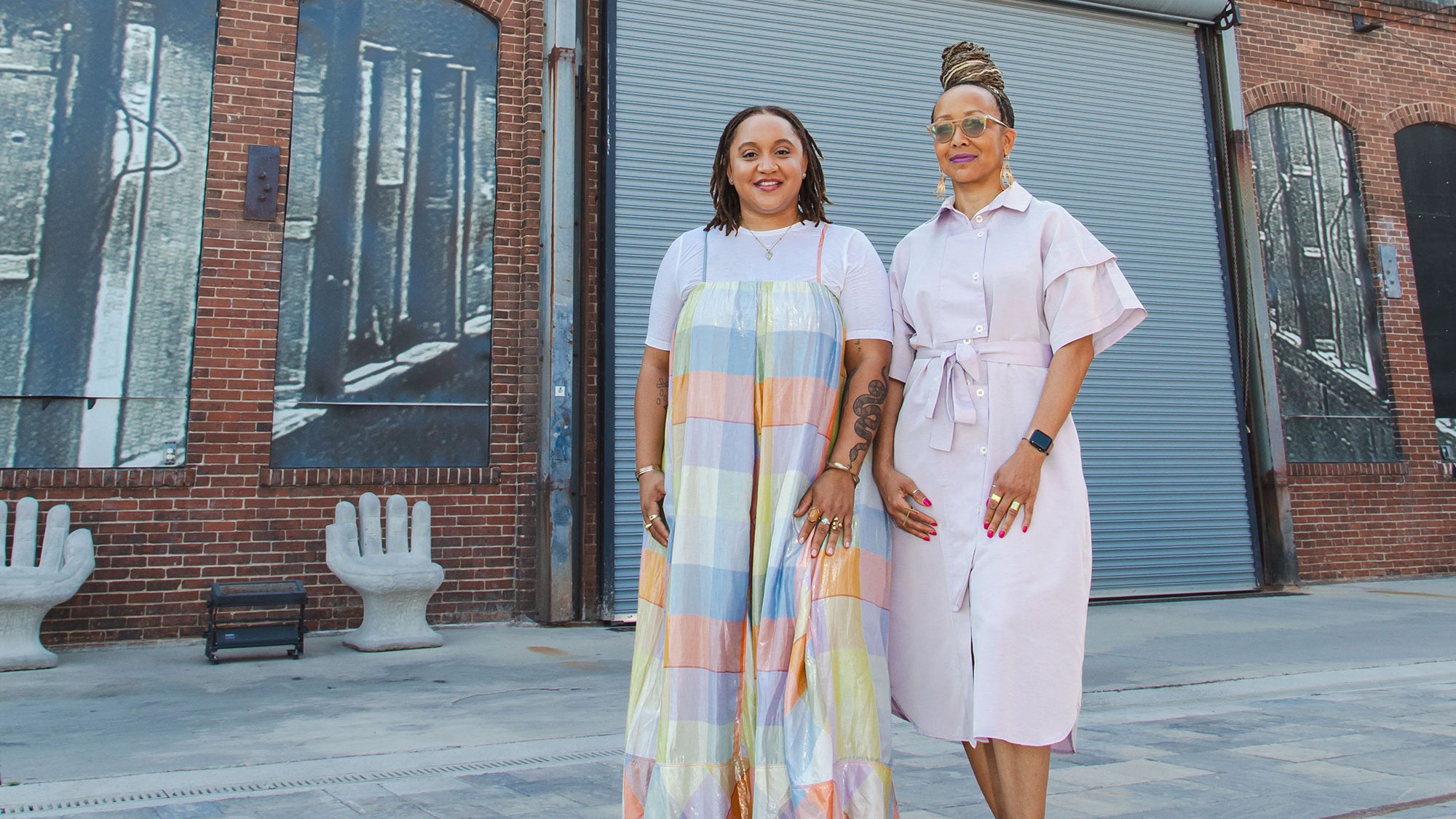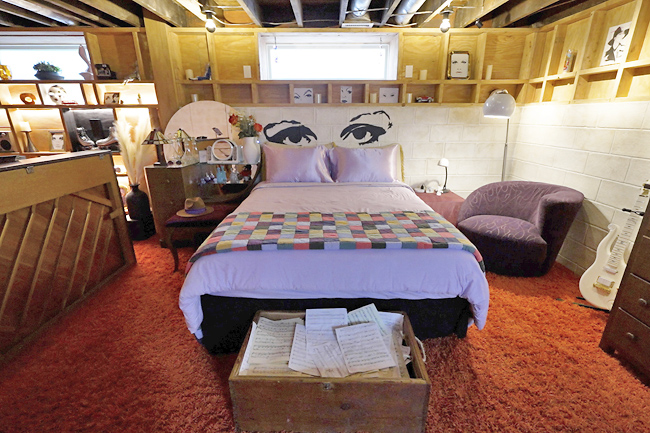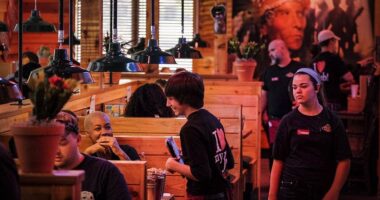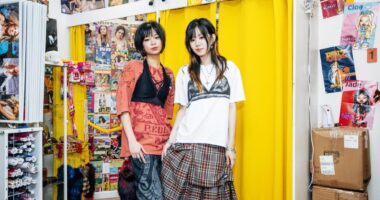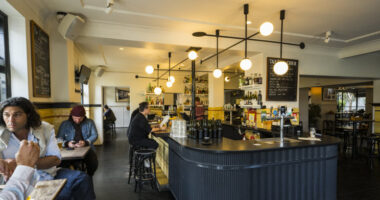Art Market Productions director Kelly Freeman set the scene during a recent call with Vanity Fair: “There’s something about creating that blank canvas that then our gallery partners, our cultural partners, our artists get to come in and program,” she says. “There’s so much energy in the air, and of course that’s Atlanta for you.” The Atlanta Art Fair runs concurrently with Atlanta Art Week (held September 30 through October 6), which was founded by art adviser Kendra Walker. Now in its third year, Walker’s project not only landed her a spot on Forbes 30 Under 30 list, but signaled Atlanta’s rise to the larger art community. While there isn’t overt collaboration between the two events, there isn’t competition either—instead an overarching desire to cultivate longevity prevails. The Atlanta Art Fair therefore is simultaneously a response to the city’s massed attention and a call for more interested parties to stick around. “Once people are engaged, I hope that they stay engaged with the offerings that Atlanta has outside of October, outside of that week,” Lauren Jackson Harris, guest curator and cofounder of Black Women in Visual Art, said. “It’s just visibility and consistency that I’m hoping to see, because we’re not a New York or LA, but we can create our brand by people just being consistent and intentional about feeding the arts.” This is the refrain of those with a more optimistic outlook of the current market. As the scramble to readjust unfolds, those with robust commitments to community, art, and artists themselves, rather than to a game of assets and numbers, will stand the test. “Letting Atlanta be Atlanta—it’s what I think we do best as an organization,” Freeman said. “We have no ego in the project. I know I will have done my job correctly if an attendee learns about some exhibition happening at Spelman College in January and decides to go because of an interaction they had at the fair.” Here, a conversation with the curators of the Art Fair about the state of Southern art and Atlanta’s growing part in its continued presence. Vanity Fair: Can each of you speak to the dynamic of the American South in the contemporary art world? Lauren Jackson Harris: It was a funny comment from one of our friends, she mentioned people sometimes revere Atlanta’s art scene as the hillbilly of the South. I think once people come to the city and experience the vastness of talent that is here, even though you have to dig a little bit more—it’s not as concentrated in pockets as New York or LA.—but once you do find the richness that’s in Atlanta, you really see the value that we offer to the platform as a whole. People always talk about this “Atlanta Renaissance,” but I’m like, Atlanta has been the Renaissance for many years. Whether it’s music, acting, dance, visual art, creative industry. We always have created that energy and that fire, and people have capitalized off of that. I don’t want to be compared to New York or LA. Because Atlanta, we are our own child, we are our own entity, and we have our own brand of what we offer. And to compare us to major cities such as New York and LA. does us a disservice. Karen Comer Lowe: We’re treated like this stepchild, as if there has not been an active art scene in Atlanta for decades. When I entered, I came during the National Black Arts Festival, which was this, at the time, biannual festival that brought people to Atlanta every other year for visual arts, dance, and film. Everything Black and in culture. I’ve seen this art community thrive. If it’s new to you, that’s great. But what I would like is for people to come here, and like Lauren said, just experience it for yourself so that you can see what we have here, because there’s so many artists who live here and show outside of Atlanta. What we need in Atlanta are resources put into these spaces that we have so that we can develop new spaces. What were the early conversations about curation, the narratives you wanted to present, and choice of artists to feature? Harris: I sometimes work backwards, but my title didn’t come until after I started really working and having conversations with the artists and seeing what their work made me feel. The work of genteel/gentle has been haunting me from another exhibition that I wanted to do. I have five artists, and they range from barely ever shown to international professional artists. genteel/gentle is a way, one: to bring in a Southern narrative—I’m from Atlanta, so to incorporate that, this being the first Art Fair, I’m like, “I want people to recognize Atlanta artists.” I want to bring Atlanta to the forefront in this way. I wanted to package this idea of genteelism, which is a very antiquated term, and it’s a Southern term that could be seen as a negative, but to me it says refinement. It was used to separate classes before, but now I see it as a way to really hone it in. The South has a refined sense of respectability politics. Regardless of all the dark narratives that we have, there’s still a, “Hey, how you doing today?” You going to wave your hand when I drive past you in my neighborhood. There’s still this real basis of respectability, Southern respectability, so I’m bringing that in. But the gentle is kind of a new narrative for contemporary thought, because nowadays we do have to be gentle with how people identify, what their stories are. Regardless of the sensibilities, we also have to respect humanity. So it’s a mixture of respectability and humanity. Lowe: What I’m doing is a little different. I’m not curating an exhibition, I’m presenting two artists in two separate spaces. I started with Navin Norling, who is Atlanta-based. When I was asked to think about a project, he immediately came to mind. Navin uses disregarded items like windows, and doors, and wheelchairs, to create work that speaks about some of the inequities and perceptions of race and identity. I’m really excited to present his work as one separate presentation of windows that incorporates some of the pop iconography and some signifiers of race and class. Then I’m presenting Pam Longobardi. I worked with her in 2020 and presented her work in a show that I felt like no one ever saw because the world shut down in the midst of it. She is a social activist, and her work is really deeply rooted in environmental activism. She started this project that’s called The Drifter’s Project, an international initiative where she collaborates with others to excavate the plastics from the oceans around the world. It will be a dynamic sculpture created from these objects that have been taken from the bottoms of the oceans to make a statement about what we’re doing to the environment. This running theme of Atlanta being taken for what it is, for who it is, separate from, or not compared to, New York, or LA—what is Southern art then through that Atlanta perspective? Harris: I think one of my artists, Shanequa Gay, is Atlanta through and through. Lowe: Not Atlanta, Atlanta. Harris: Old school Atlanta. I think we were raised on different sides and people talk about the different sides of Atlanta. It’s all different upbringings, different dialects, different experiences in life. So the way you were raised in Atlanta is also how you were cultured into it. I grew up in a middle-class family on the east side, and a big house off of Panola Road. And my parents were involved in the National Black Arts Festival. We went to the Mayor’s Masked gala when I was young. When you talk about Shanequa Gay’s work and when she talks about it, it’s very much entrenched in her history, herself and her familyhood. One of her most recent exhibitions, she got negatives from one of her aunts, one of her elders in her family that were negatives of her great-great-grandfather’s house. And she created these sepia tintypes to honor the nobility that they had during this timeframe when people were still considered sharecroppers. You see her Southern roots really shine in her work, and she naturally laces that into all of her visual practice. Lowe: I was thinking about Radcliffe Bailey. When you talk about art in the South, because it’s different for each of the artists and what the Southernness is. But I think for any artist who chooses to stay here and work here, the Southernness is incorporated into the work. And so when I think about a Radcliffe Bailey who could have lived anywhere in the world at a certain part of his career, he chose to stay here in Atlanta, he was rooted here, built an extraordinary, beautiful home and studio here, and brought people to Atlanta. People from around the world would come to his house for various reasons, and that was bringing more people into Atlanta to look at what was happening here art-wise. That’s the connection to the south: is when an artist chooses to stay here and work here. Harris: But I think even with how Radcliffe, he welcomed people to his home, that is a Southern thing. That open arm. That, “Well, come on in.” That is a Southern thing. I think that artists here do that often. “Come to my studio, come see what I’m working on.” Radcliffe, his work is all over the country, international, but he stayed home. And he brought people here. I think that that needs to be a frequent thing in the art world, because how else do we learn and really embody what the art means if we’re not sharing? Which feels in line with Southern hospitality. Harris: Yeah, it’s hospitality. That’s it. “Come here, we’ll welcome you.” But also give us a little love.
Subscribe
Login
0 Comments
